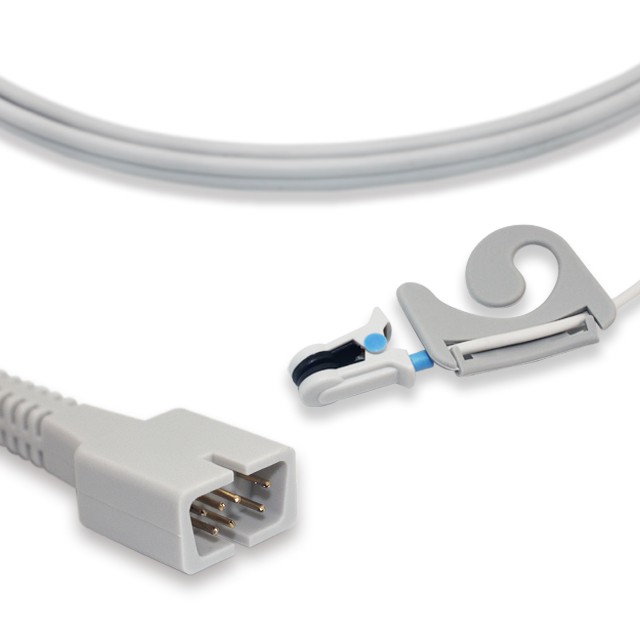In the realm of modern medicine, the pulse oximeter, equipped with a SpO2 sensor, stands as an indispensable tool, providing healthcare practitioners with crucial insights into patients' oxygen saturation levels. From hospitals to ambulances, and even in the comfort of our homes, these compact devices play a pivotal role in monitoring health. But what exactly are SpO2 sensors, and how do they work?

SpO2 sensors, synonymous with pulse oximeters, are small medical devices engineered to measure oxygen saturation levels in the blood. Unlike other vital signs, such as blood pressure or temperature, oxygen saturation cannot be measured through conventional means; hence, the necessity for specialized equipment arises.
The ubiquitous presence of pulse oximeters in various healthcare settings underscores their indispensable role in modern medicine. From bustling operating rooms to serene recovery suites and ambulances. Medical professionals use pulse oximeters to gather information about their patients.
The SpO2 sensor operates on the principle of spectrophotometry to measure blood oxygen saturation. It emits two wavelengths of light, typically red and infrared, through tissue, such as a fingertip or earlobe. As the light passes through the tissue, it is absorbed by oxygenated hemoglobin (HbO2) and deoxygenated hemoglobin (Hb) in the blood. Oxygenated hemoglobin absorbs more infrared light and allows more red light to pass through, while deoxygenated hemoglobin absorbs more red light and allows more infrared light to pass through. By comparing the absorption of these two wavelengths, the SpO2 sensor calculates the percentage of oxygen saturation in the blood. This information is then displayed on the pulse oximeter's screen, providing healthcare professionals with real-time monitoring of patients' oxygenation status.
A pulse oximeter is a medical device that typically consists of both hardware components (such as a probe with sensors) and a display screen. It is used to measure and display SpO2 levels and pulse rates. Pulse oximeters are portable and can be used in various clinical settings or even at home for continuous monitoring of these vital signs.
An SpO2 sensor, on the other hand, is a specific component of a pulse oximeter. It is the part of the device responsible for directly measuring blood oxygen saturation levels.
Here's a table illustrating the differences between a pulse oximeter and an SpO2 sensor:
| Aspect | Pulse Oximeter | SpO2 Sensor |
|---|---|---|
| Definition | Medical device measuring SpO2 and pulse rate | Component of the pulse oximeter measuring SpO2 |
| Functionality | Measures SpO2 and pulse rate simultaneously | Specifically measures SpO2 |
| Components | Includes display screen, probe, sensors | Typically consists of sensors and photodetector |
| Application | Used for continuous monitoring of oxygen saturation and pulse rate in clinical settings or home care | Part of pulse oximeter used for SpO2 monitoring |
| Output | Displays SpO2 and pulse rate on screen | Sends data to pulse oximeter for processing and display |
| Placement | Attached to patient's fingertip, earlobe, or other suitable body part | Positioned on patient's fingertip or earlobe |
| Purpose | Provides real-time monitoring of oxygen saturation and pulse rate for clinical assessment | Specifically measures oxygen saturation level |
| Interpretation | Readings help assess respiratory status and oxygenation level | Oxygen saturation level is a key parameter in evaluating patient's condition |
While SpO2 sensors offer invaluable benefits, several factors can influence their accuracy and reliability:
Understanding how SpO2 sensors work is essential for healthcare professionals to accurately monitor patients' oxygen saturation levels and ensure optimal care. By leveraging the principles of spectrophotometry, SpO2 sensors provide non-invasive and real-time measurements, helping to identify potential respiratory issues promptly.
For medical facilities and professionals seeking reliable and high-quality medical accessories, including SpO2 sensors and a wide range of other essential equipment, consider partnering with Medke. As a leading manufacturer specializing in medical accessories, Medke is committed to delivering innovative and dependable products that meet the stringent standards of the healthcare industry. Our extensive range includes SpO2 sensors, ECG/EKG electrodes, NIBP/IBP cuffs, temperature probes, EEG electrodes, ESU pencils, and fetal probes. Contact us by info@medke.com now and our team is ready to assist you with any inquiries you may have.